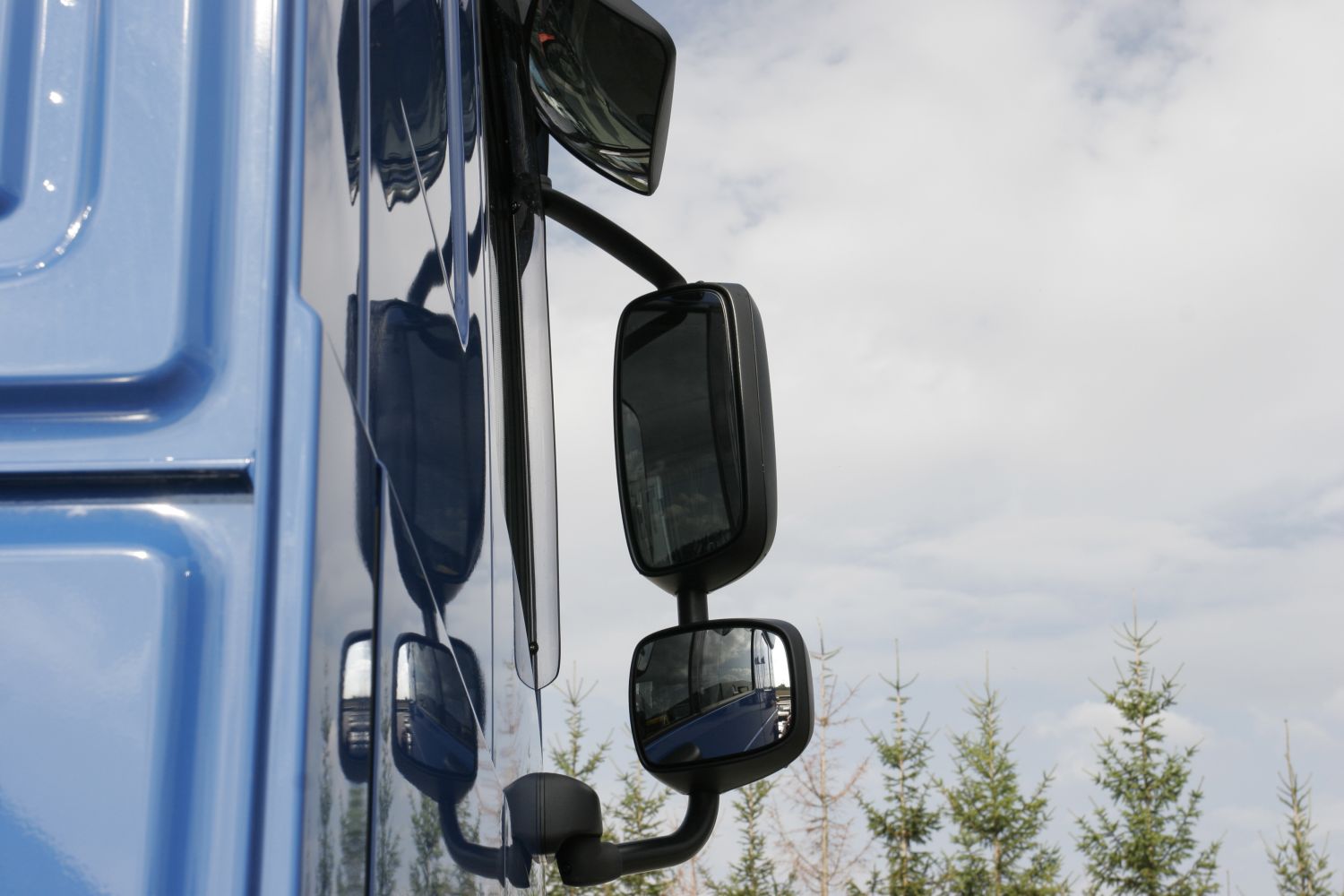
Perfect maneuvering into a parking space and seeing the pedestrians—good all-round visibility makes the life of truck drivers easier. The Road Traffic Ordinance requires sufficient visibility under all operating conditions. How is the visibility in the truck?
Curved Right and Left Rearview Mirrors Compulsory for Trucks 7.5 Tons and Over
Right and left rearview mirrors with a specific curvature are prescribed for trucks 7.5 tons of total weight and over. Installations on the right side must further include a wide-angle mirror and a close- proximity mirror at a height of at least 80 inches (2 m). The mirror holders must fold away in the event of contact with an obstacle. This is meant to reduce the risk of injuries. Prescribed vehicle dimensions exclude the mirrors. Vehicles with installed rear-view mirrors may exceed a width of 8’4” (2.55 m).
Standard Mirrors for Rearview
Standard mirrors on the right and on the left show the driver the rearview next to the respective vehicle side on a slightly reduced scale. The wide-angle mirror on the passenger side, however, shows the right vehicle side on a significantly reduced scale. This way, the driver can also see what is happening in the front area on the right of the vehicle. The close-proximity mirror covers the area directly to the right of the driver’s cab.
Wide-Angle Mirrors Problematic When Backing Up
No matter how precisely the wide-angle mirror has been cut, there are significant weak points during backward orientation. The perspective shown is extremely distorted. This makes it hard, for instance, to judge distances. The same applies to the speed of approaching vehicles. The problem is that, depending on the optic perspective, movements seem much slower than they really are. Caution! It is illegal for drivers to orient themselves to the rear solely by looking in the wide-angle mirror.
If the normal and the wide-angle mirror are mounted very close together—even in separate frames—drivers should not forget that their eyes have to adjust to two different focal planes. The eyes try to compensate for this state by continuously adjusting the focal plane. This is heavy work for the eyes and may cause a headache. It may also happen that they start to see an unfocussed floating image in front of the mirror.
Cameras Can Improve Visibility
Cameras are at least theoretically able to improve visibility. However, they require the driver to watch a screen in addition to various mirrors. All this information needs to be evaluated and correctly allocated. It is better to use acoustic-optical systems; they respond with warning sounds from the appropriate directions to changes in the field of vision.
Blind spots remain problematic. Also the A-column and bars of the side windows often obscure the view. Mercedes-Benz in Stuttgart has identified a total of nine blind spots around the truck. Front mirrors or front cameras have been prescribed by law for several years. The view through various mirrors or cameras is called indirect view.
Direct View from Driver’s Cab is Prescribed by Law
The road traffic ordinance prescribes a direct view from the driver’s cab. Relevant regulations stipulate that a sufficient field of view must be maintained under all operating conditions. The areas that need to be visible are defined by an imaginary semi-circle with a diameter of 40 ft.(12 m) around the driver. A critical area is created when the view between A-column and rearview mirror holder is blocked.
Careful with Aspherical Mirrors!
Aspherical mirrors, which are often used in trucks and transporters, must be used with care. These mirrors consist of two zones separated by a thin line. The outer zone is significantly curved and thus offers a wide-angle perspective. The viewing angle is 200 percent larger than that of normal mirrors. In principle, there is nothing wrong with a wider angle of view, but it does not cover the entire vehicle side. At best, the blind spot becomes a little bit smaller.